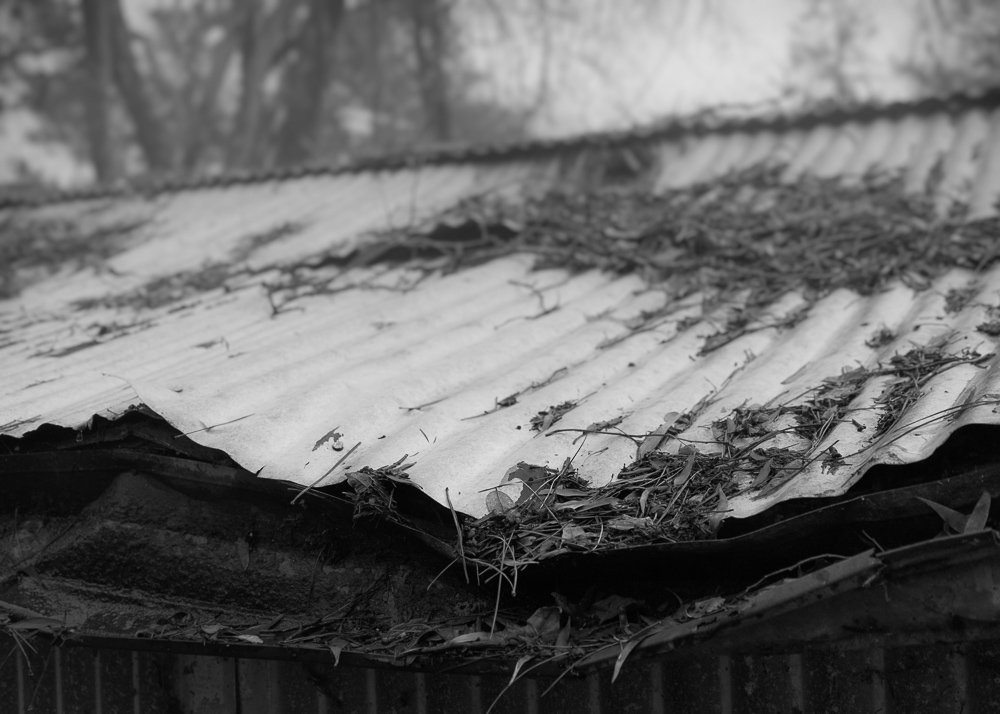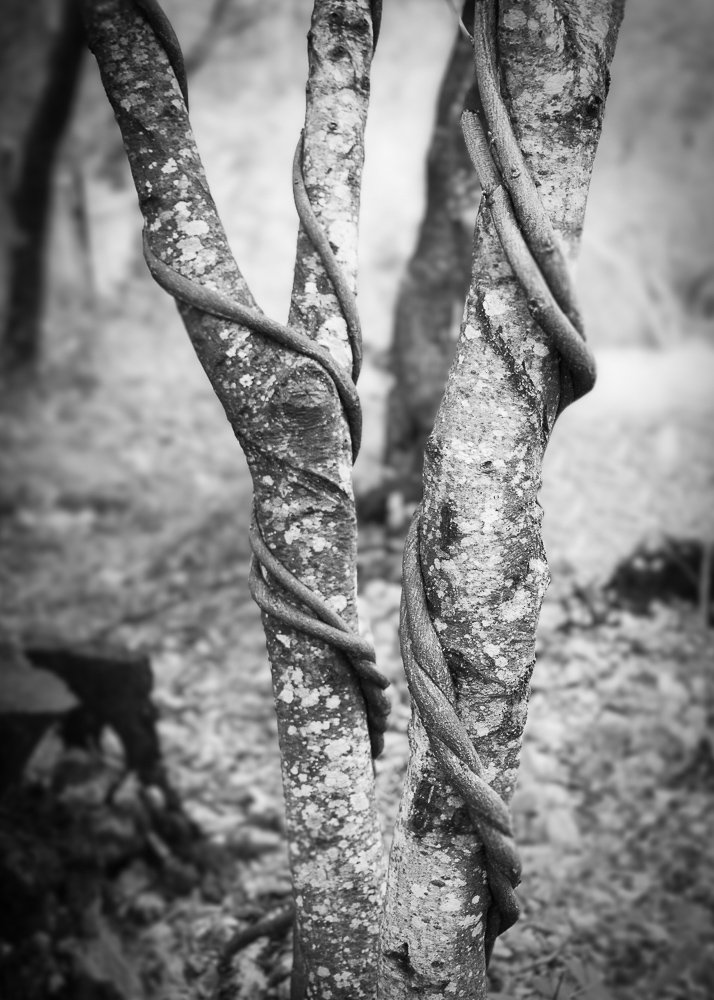WaterWorld
Created during the winter storms of 2023, WaterWorld began as an exploration of place—specifically, my home in rural Sonoma County, California. After years of fire and drought that had dismantled any last shred of denial, an accident of timing transformed these images into a new response to the effects of global warming. Weeks of white skies and the grey and silver tones of rain seemed to speak of sadness, awe, and even reassurance.
That January, at least nine successive atmospheric rivers hit California—the wettest period since rainfall records had been kept, in some areas. As the weeks of rain reached near-biblical proportions, we weathered flooding, severe damage, and loss of life. The tragedies continued for months after the storms ended.
My camera captured the impacts of the deluge on the built and natural environment around me: the dilapidated building that had housed my well, falling down around it. The shimmering, hazy air that dripped with humidity. The swollen waterways reflecting the turmoil and sadness of life. Wherever it could find a toehold against the storms’ pounding, organic matter clung to life, then expanded its footprint. Water wrought damage; then vegetation absorbed it, turning chaos into order. Even through the clouds, light played on water—an elemental microcosm that recalled the farthest galaxies.
One grey day between the storms, I visited a seasonal lake near my home. Hidden in a thicket of willows in summer, this tiny stream had filled with the winter rains, jumped its banks, and spread over a mile across a low basin. It engulfed the ancient oaks, grazing pastures, and vineyards in its path. When the rain and wind calmed down, it had flattened out to a placid lake. Reassuring as Noah’s rainbow, the lake had returned.
WaterWorld captures a silvery new world that climate change has wrought, bringing destruction and loss, but also awe and reassurance.
















